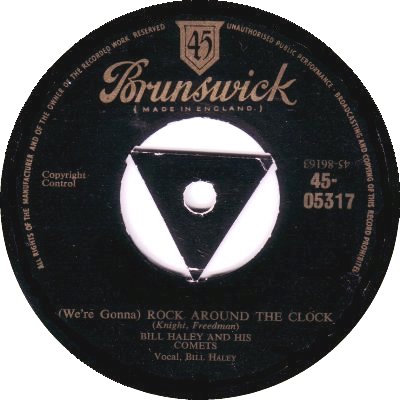
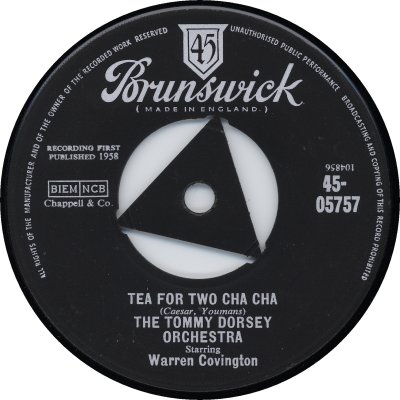
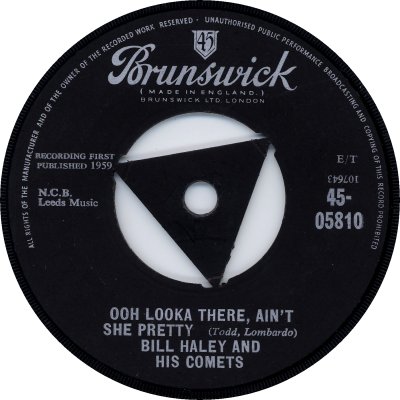
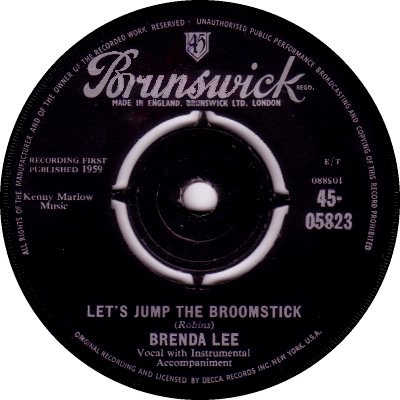
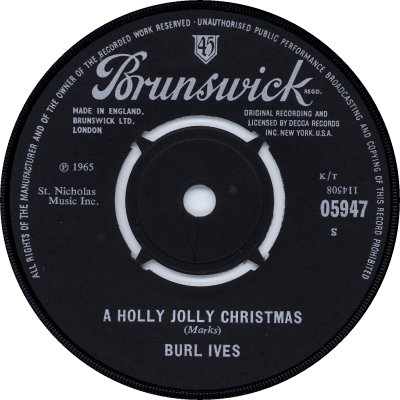
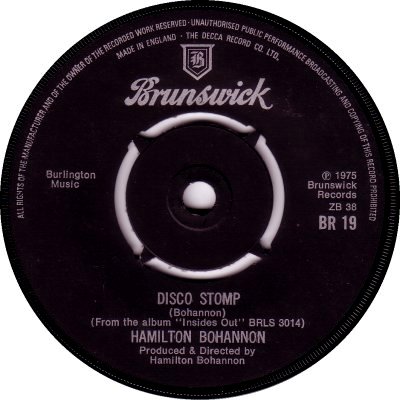
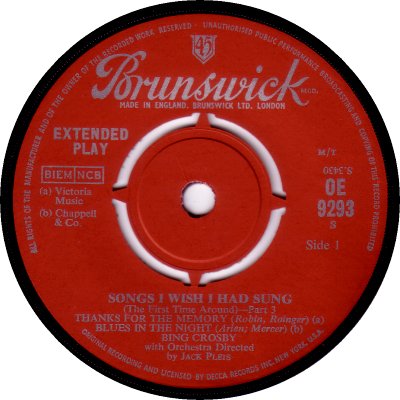
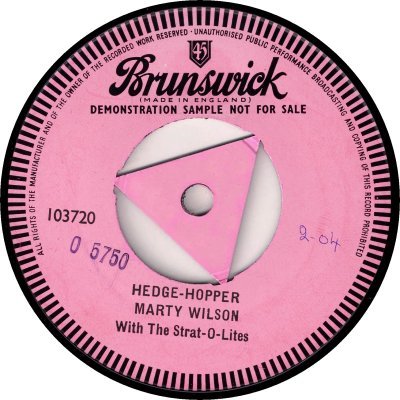
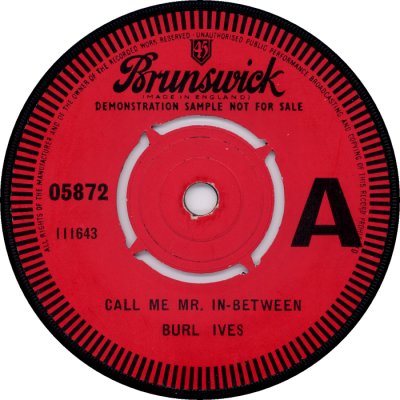
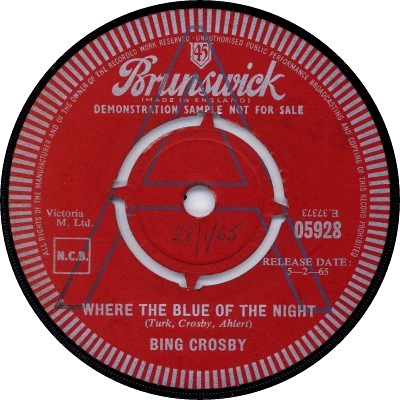
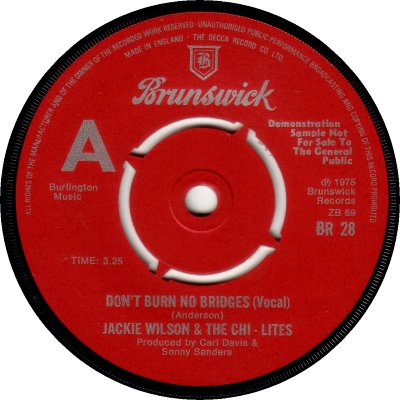
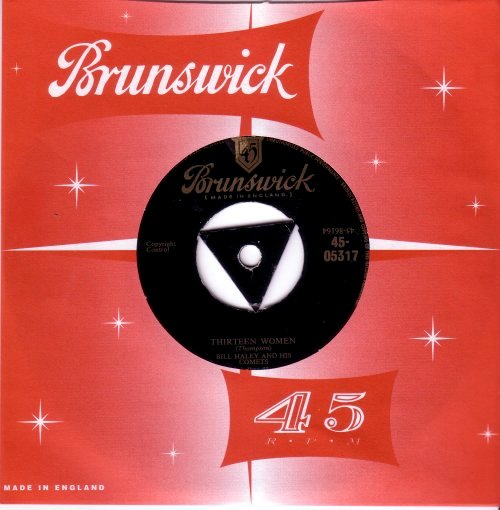
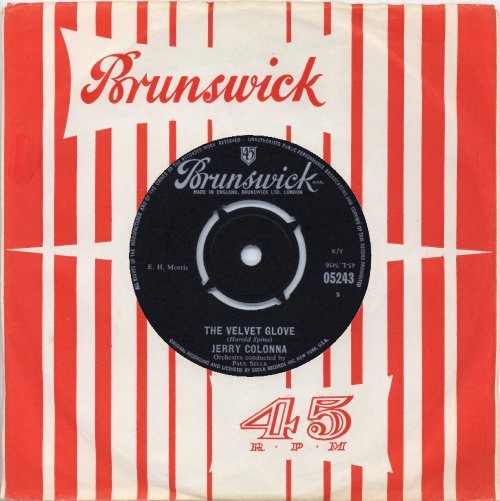
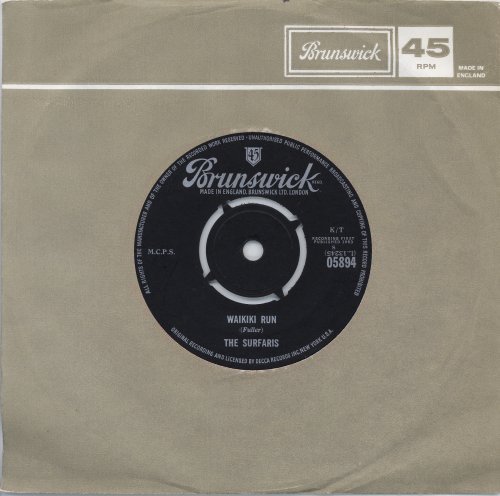
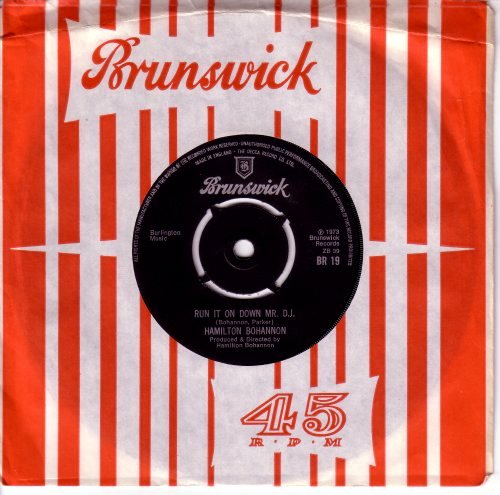
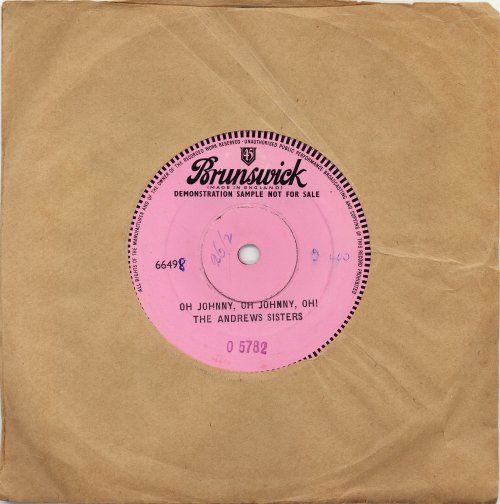
American. Brunswick began life as the record arm of cabinet makers Brunswick-Balke-Collander, of Chicago. It issued its first records in 1920, became part of American Decca, and flourished throughout the 78 rpm era, shifting shed-loads of Bing Crosby records in the process. Its focus shifted in the late 1950s, when Decca began to use it as a vehicle for their R&B product. Many of the most successful records from this period were produced by Nat Tarnopol. When Tarnopol showed signs of setting up his own company, in 1960, Decca formed the Brunswick Recording Corporation and gave him the job of executive vice president. Brenda Lee chalked up more than twenty Top 50 singles for the label during the period 1960-65. Along with its parent company U.S. Decca, Brunswick was bought by MCA in 1962. The new owners kept it going in Britain as an outlet for American Decca records until 1967, when it was discontinued; after that time artists who had appeared on Brunswick were switched to MCA.
In the States Brunswick's relationship with MCA grew increasingly acrimonious, and in 1970 Tarnopol bought out MCA's 50% share in the company. MCA retained worldwide manufacturing and distribution rights to the label's records until 1972. From 1967 Brunswick had a sister-label, Dakar, in its home land. At one point Polydor made an attempt to license Dakar records for the UK, and a couple of singles - Tyrone Davis's 'I Had It All The Time' and 'Sweetest Feeling' by Jackie Wilson - were scheduled for release in the summer ('Music Week', 25th March 1972) but 'MW' of the 19th of August reported that the Polydor deal hadn't been finalized because of contractual problems with Brunswick material, and that Tarnopol was negotiating with an number of other UK companies. He eventually signed a three-year licensing deal with Decca ('MW', 23rd September 1972), as a result of which the Brunswick label reappeared in Britain, the first singles coming out in January of the following year. It enjoyed considerable success on both sides of the Atlantic in the 1970s as a vehicle for Soul / Disco music, with the Chi-Lites in particular hitting the Charts frequently, but a financially damaging court case in 1977 followed by management wranglings more or less brought things to a halt. Brunswick disappeared from these shores in or around March 1978, when its back-catalogue seems to have been deleted; it limped on until 1982 in the States.
The first British Brunswick 7"s came out in 1954; they had brown labels with triangular centres and gold printing (1). The colouring changed to black and silver (2) in April 1956, and the triangular centres were gradually replaced by the more solid four-pronged ones from September to November 1979. There were minor changes in the layout of the text: the 'Made in England' under the logo gained a 'Brunswick Ltd. London' below it from June 1959 (3); towards the end of the year the two lines merged into one and a reference to Decca Records New York appeared at the bottom of the label (4); and finally in September 1964 the line under the logo migrated to 10 o'clock and the Decca New York moved to 2 o'clock (5). The same basic design, but with a smaller label name and the '45' in the shield replaced by a 'B', was used for the '70s revival (6, 11). EPs were issued with red labels in the 1950s (7).
At first Demos had pink labels (8); as was the case with the other Decca family demos, they were initially single sided and came in plain brown sleeves (16). In early 1961 double-sided demos were introduced, and the pink labels were replaced by red ones (9); a large hollow 'A' was added late in 1962, and in March of the following year the black print turned silver (10). The hollow 'A' shrank, filled in and moved to 2 o'clock in March 1965. Demos in the 1970s were again red (11). Early company sleeves were red with stars (12); these changed to a striped design in the early '60s (13). The grey-brown sleeve (14) is uncommon, and seems to date from c.1967, when Decca and Deram sleeves briefly had a similar design; some sources say that it was for export issues. Singles from the revived era reverted to the striped sleeve (16). In the 1950s and '60s Brunswick singles were mainly numbered in the 05000s, though at least one reissue from the 78rpm days had an 03000 number (Bing Crosby's 1947 version of 'White Christmas', 03384). 1970s singles had catalogue numbers in a BR-0 series. Ths discography below only covers the latter period.
('Both Sides Now'; www.bsnpubs.com ; www.brunswickrecords.com)
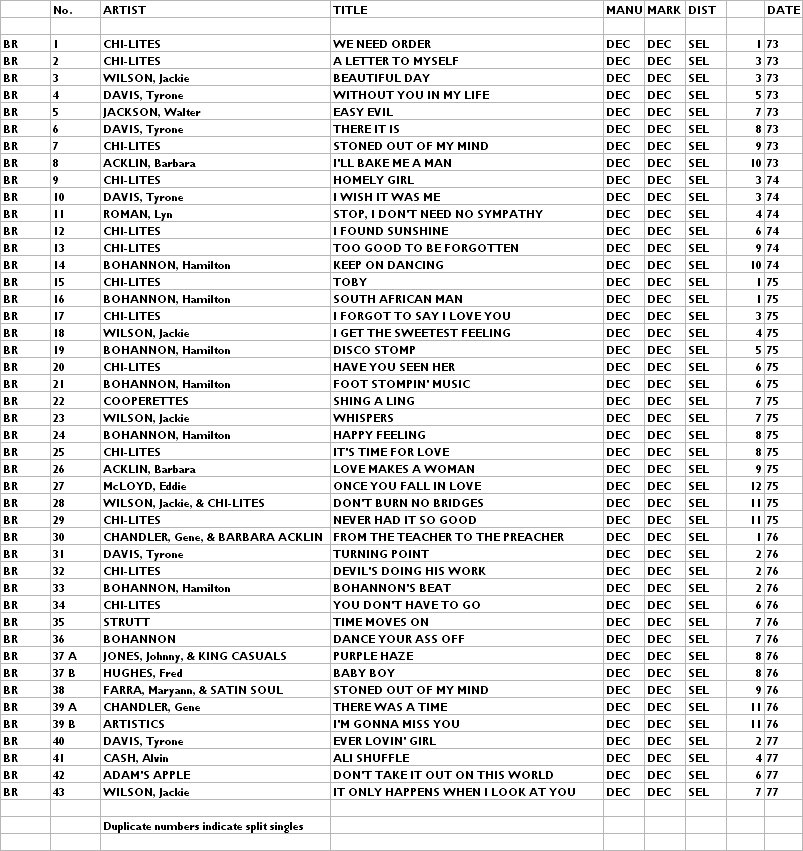


Copyright 2006 Robert Lyons.

